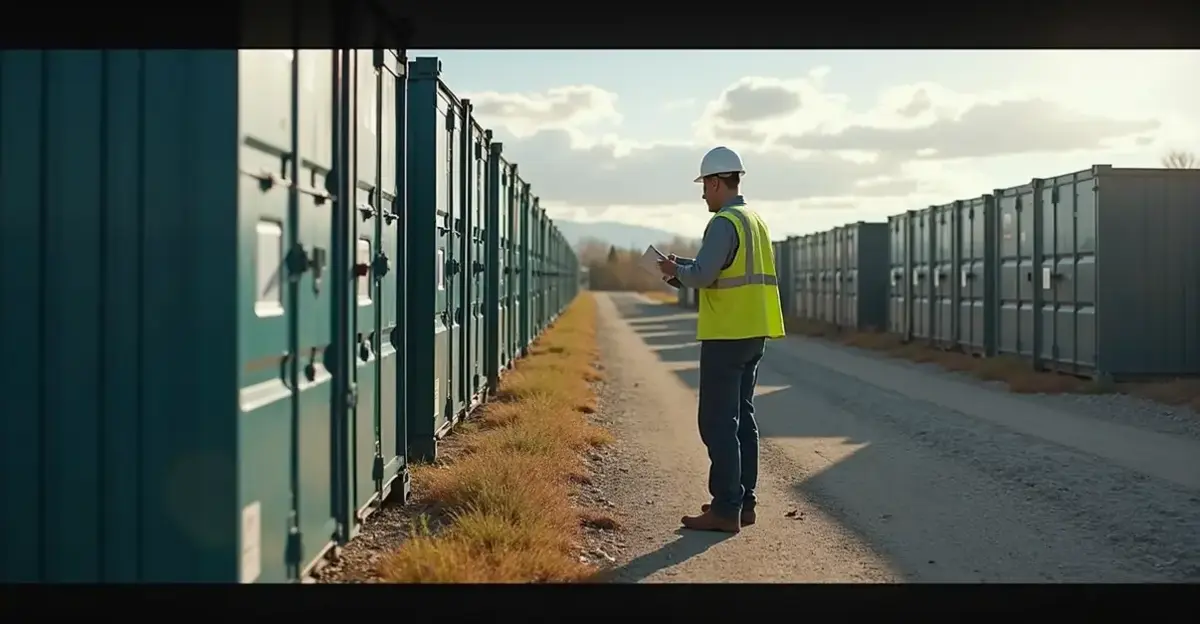Retired EV batteries with 70-80% capacity are being repurposed for stationary storage and microgrids. Redwood Materials deployed North America's largest 12MW/63MWh microgrid using second-life batteries. The market is projected to reach $4.2B by 2035, offering cost-effective energy storage while reducing waste.

Electric Vehicle Batteries Find New Life in Energy Storage
As electric vehicle adoption accelerates globally, a growing challenge emerges: what happens to the millions of lithium-ion batteries when they no longer meet automotive performance standards? The answer lies in second-life applications, where retired EV batteries are finding new purpose in stationary energy storage and microgrid projects. These batteries, typically retaining 70-80% of their original capacity, are being repurposed to support renewable energy integration, grid stability, and backup power systems.
Groundbreaking Microgrid Deployments
One of the most significant developments in 2025 comes from Redwood Materials, which has launched its Redwood Energy division to focus specifically on second-life battery applications. The company has deployed what it calls the largest microgrid in North America – a 12 MW/63 MWh system powering an AI data center in Abilene, Texas. "We're receiving over 20 GWh of batteries annually, equivalent to 250,000 electric vehicles," says a Redwood spokesperson. "By giving these batteries a second life in microgrid applications, we're extending their usefulness by 10-15 years before final recycling."
This project represents a major milestone in the circular economy for EV batteries. Crusoe Energy, partnering with Redwood, has demonstrated that second-life batteries can reliably power demanding applications like AI data centers, which require consistent, high-quality power. "Our Spark modular data centers are proving that sustainable infrastructure can meet the energy demands of artificial intelligence," notes a Crusoe representative.
Technical and Economic Viability
The technical feasibility of second-life battery applications has been extensively studied by research institutions worldwide. According to research from the Technical University of Denmark, retired EV batteries can provide reliable energy storage for grid applications, renewable energy smoothing, and peak shaving. The key advantage lies in cost-effectiveness – second-life batteries can be deployed at approximately 30-50% of the cost of new battery systems.
However, challenges remain. The American Council for an Energy-Efficient Economy identifies several barriers, including the need for standardized testing protocols, complex logistics for battery collection and transportation, and economic competition from falling prices of new lithium-ion batteries.
Global Market Growth and Projections
The second-life EV battery market is experiencing rapid expansion. According to IDTechEx research, the market is projected to reach US$4.2 billion by 2035. Current deployments are concentrated in Europe and North America, primarily serving commercial and industrial customers. "We're seeing strong interest from businesses looking to optimize their energy costs through peak shaving and renewable energy integration," says an industry analyst.
In Europe, startups like Altilium are achieving significant environmental benefits, reporting 70% reductions in CO₂ emissions compared to manufacturing new batteries. Meanwhile, India is emerging as a major player with its Battery Waste Management Rules driving domestic recycling capacity.
Environmental and Economic Benefits
The environmental advantages of second-life battery applications are substantial. By extending the useful life of EV batteries, the approach reduces electronic waste and minimizes the environmental impact of battery production. "Every battery we repurpose represents significant resource conservation and emissions reduction," explains a sustainability expert. "We're not just delaying recycling – we're maximizing the value extracted from these complex energy storage systems."
Economically, second-life batteries create new revenue streams for automakers, battery manufacturers, and energy companies. They also provide cost-effective energy storage solutions for utilities and businesses, helping to stabilize electricity grids and support renewable energy deployment.
Future Outlook and Challenges
Looking ahead, the success of second-life battery applications will depend on several factors. Standardization of battery testing and grading protocols is crucial for building market confidence. Advanced technologies, such as semi-automated battery disassembly and rapid state-of-health assessment, are being developed to improve efficiency and reduce costs.
"The key challenge is maintaining economic viability as new battery prices continue to decline," notes an industry observer. "However, the environmental benefits and grid support capabilities of second-life systems provide compelling value beyond pure cost considerations."
As more electric vehicles reach the end of their automotive life in the coming years, the volume of available second-life batteries will grow exponentially. This presents both an opportunity and a responsibility to develop sustainable solutions for managing this valuable resource. The successful deployment of microgrids and stationary storage projects in 2025 demonstrates that second-life batteries are not just a theoretical concept but a practical, scalable solution for our energy future.

 Nederlands
Nederlands
 English
English
 Deutsch
Deutsch
 Français
Français
 Español
Español
 Português
Português



